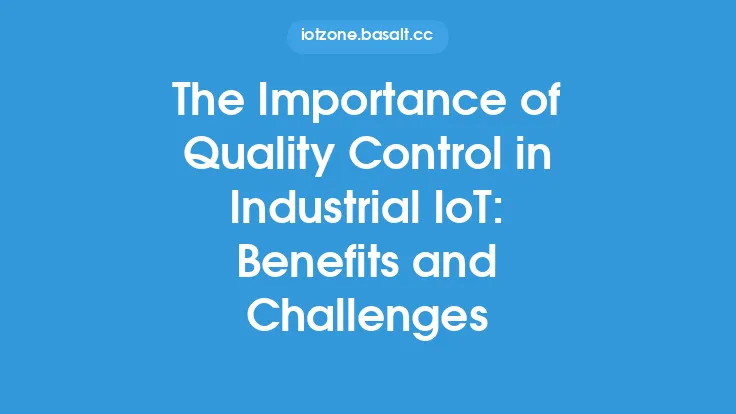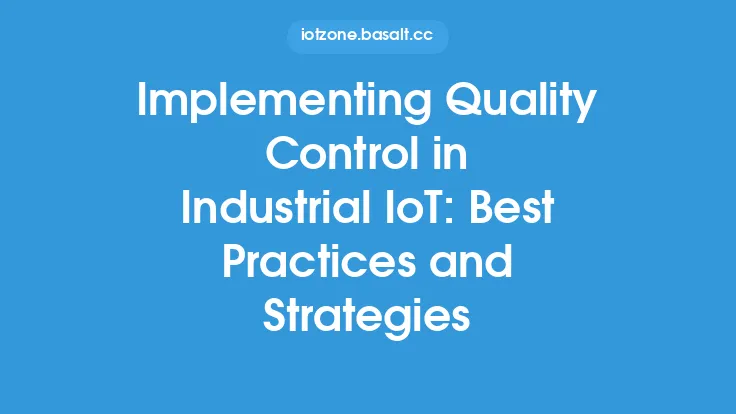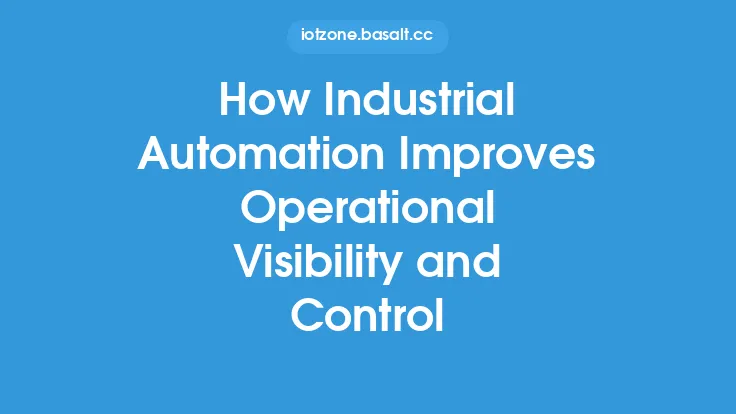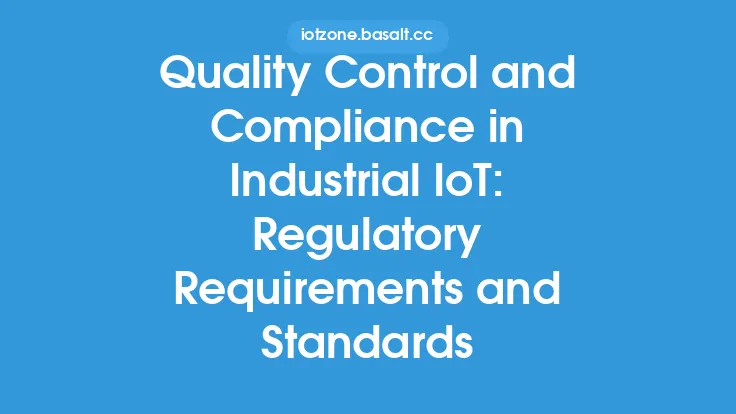The manufacturing sector has undergone significant transformations in recent years, driven by the advent of Industrial Internet of Things (IIoT) technologies. One of the key benefits of IIoT is its ability to help manufacturers identify and eliminate bottlenecks in their production processes. Bottlenecks are constraints that limit the overall capacity of a manufacturing system, leading to reduced productivity, increased lead times, and lower quality products. By leveraging IIoT, manufacturers can gain real-time visibility into their production processes, detect bottlenecks, and take corrective actions to optimize their operations.
Introduction to Industrial IoT
Industrial IoT refers to the use of IoT technologies in industrial settings, such as manufacturing, oil and gas, and transportation. IIoT involves the deployment of sensors, actuators, and other devices that can collect and transmit data in real-time, enabling manufacturers to monitor and control their production processes remotely. IIoT devices can be connected to a variety of assets, including machines, equipment, and production lines, providing a comprehensive view of the manufacturing process.
Identifying Bottlenecks with IIoT
To identify bottlenecks, manufacturers can use IIoT devices to collect data on key performance indicators (KPIs) such as production rates, cycle times, and equipment utilization. This data can be analyzed using advanced analytics tools, such as machine learning algorithms, to detect patterns and anomalies that may indicate the presence of a bottleneck. For example, if a machine is consistently operating at a lower capacity than expected, it may indicate a bottleneck in the production process. IIoT devices can also be used to monitor the condition of equipment and predict when maintenance is required, reducing the likelihood of equipment failures that can cause bottlenecks.
Types of Bottlenecks in Manufacturing
There are several types of bottlenecks that can occur in manufacturing, including equipment bottlenecks, labor bottlenecks, and material bottlenecks. Equipment bottlenecks occur when a machine or equipment is unable to keep up with demand, leading to a backlog of work. Labor bottlenecks occur when there are insufficient skilled workers to perform a task, leading to delays and reduced productivity. Material bottlenecks occur when there are shortages of raw materials or components, leading to production delays. IIoT can help manufacturers identify and address these types of bottlenecks by providing real-time visibility into their production processes.
IIoT Technologies for Bottleneck Detection
Several IIoT technologies can be used to detect bottlenecks in manufacturing, including sensors, RFID tags, and machine vision systems. Sensors can be used to monitor equipment performance, detect anomalies, and predict maintenance requirements. RFID tags can be used to track the movement of materials and products, enabling manufacturers to identify bottlenecks in their supply chains. Machine vision systems can be used to inspect products and detect defects, enabling manufacturers to identify bottlenecks in their quality control processes.
Implementing IIoT Solutions for Bottleneck Detection
To implement IIoT solutions for bottleneck detection, manufacturers should follow a structured approach that includes several steps. First, they should identify the key areas of their production process where bottlenecks are likely to occur. Next, they should select the IIoT technologies that are best suited to their needs, such as sensors, RFID tags, or machine vision systems. They should then deploy these technologies and integrate them with their existing systems, such as enterprise resource planning (ERP) and manufacturing execution systems (MES). Finally, they should analyze the data collected by their IIoT devices and take corrective actions to address any bottlenecks that are detected.
Benefits of Using IIoT for Bottleneck Detection
The benefits of using IIoT for bottleneck detection are numerous. By detecting and addressing bottlenecks in real-time, manufacturers can improve their productivity, reduce their lead times, and increase their quality. IIoT can also help manufacturers reduce their costs by minimizing waste, reducing energy consumption, and optimizing their maintenance schedules. Additionally, IIoT can enable manufacturers to make data-driven decisions, rather than relying on intuition or guesswork. This can lead to more effective decision-making and a more competitive advantage in the market.
Challenges and Limitations of IIoT for Bottleneck Detection
While IIoT offers many benefits for bottleneck detection, there are also several challenges and limitations that manufacturers should be aware of. One of the main challenges is the complexity of IIoT systems, which can require significant expertise to deploy and maintain. Another challenge is the cost of IIoT devices and systems, which can be prohibitively expensive for some manufacturers. Additionally, IIoT systems can be vulnerable to cyber threats, which can compromise the security and integrity of manufacturing data. To address these challenges, manufacturers should work with experienced IIoT vendors and system integrators, and invest in robust cybersecurity measures to protect their systems.
Future of IIoT for Bottleneck Detection
The future of IIoT for bottleneck detection is promising, with several emerging trends and technologies that are likely to shape the industry. One of the main trends is the increasing use of artificial intelligence (AI) and machine learning (ML) algorithms to analyze IIoT data and detect bottlenecks. Another trend is the growing adoption of cloud-based IIoT platforms, which can provide manufacturers with greater scalability and flexibility. Additionally, the use of 5G networks and edge computing is likely to enable faster and more reliable IIoT communications, enabling manufacturers to respond more quickly to bottlenecks and other production disruptions.
Best Practices for Implementing IIoT for Bottleneck Detection
To get the most out of IIoT for bottleneck detection, manufacturers should follow several best practices. First, they should start small, by deploying IIoT devices and systems in a limited area of their production process. Next, they should focus on a specific business problem or opportunity, such as reducing lead times or improving quality. They should also invest in employee training and development, to ensure that their workforce has the skills and knowledge needed to work with IIoT systems. Finally, they should continuously monitor and evaluate their IIoT systems, to ensure that they are delivering the expected benefits and return on investment. By following these best practices, manufacturers can unlock the full potential of IIoT for bottleneck detection and achieve significant improvements in their productivity, quality, and competitiveness.





